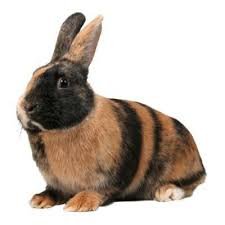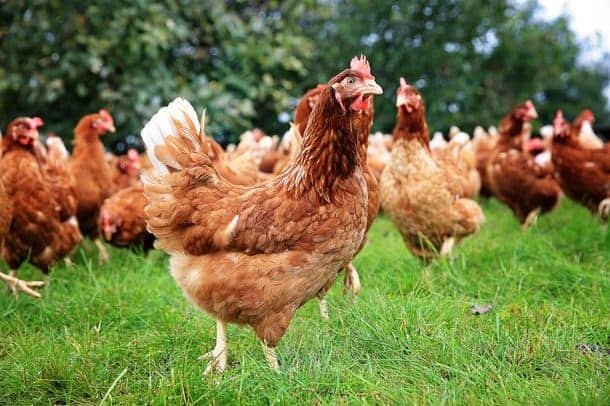All About The Vietnamese Pot-bellied pig breed
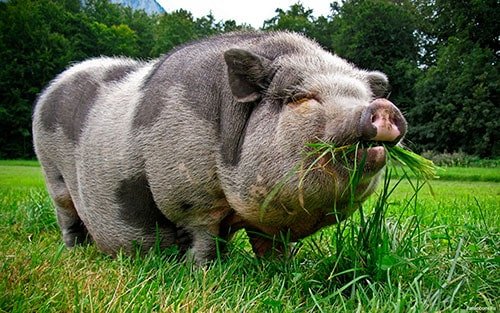
Have you ever noticed small round pigs that are black in colour with a sagging belly? Well, those are the Vietnamese pot-bellied pigs.
Here in this write-up, you will find just everything you need to know about the Vietnamese pot-bellied pigs.
What you will find includes vivid descriptions of what the Vietnamese pot-bellied pigs are, their features, history, and good reasons to choose this pig breed.
Also, details about their lifespan, environment and the disadvantages of the Vietnamese pot-bellied pigs are in this article.
You have got to check out the answers provided for the frequent questions asked about these pot-bellied pigs.
Let’s get right to it.
ATTENTION!! Learn about the pig farming business here.
What is a Vietnamese Pot-bellied pig?
This breed of domestic pig is a small-sized pig with obvious excessive sagging of the belly and spine drooping downwards.
A Vietnamese Pot-bellied pig has a swayback while standing which you can easily see.
Meaning that their spine is bending downward like they have something heavy on their back causing an excessive sagging of the spine.
Hence, the Pot-bellied pigs can be easily identified with their saggy spine and stomach.
Also, they are mini pigs with various colours which makes them unique and protects them from sunburn.
The Pot-bellied pigs are a unique breed of pigs that are very friendly and easy-going in nature.
They have a small stature and show a good level of IQ and understanding of their environments.
As such, they make lovely pets at home and show a good level of intelligence around the house.
Meanwhile, they don’t stay small forever as they add up weight nicely and rapidly within half a year.
Vietnamese Pot-bellied pig breeds are a very good source of quality pork, as they are known for their tasty meat.
Therefore, the Pot-bellied pigs are just the pigs for small scale farmers with an interest in pigs and the intention of quality meat production.

What is the origin and history of Vietnamese Pot-bellied pigs?
The Vietnamese Pot-bellied pig breed got their name not just from their place of origin which is the province of Vietnam in the Red River Delta.
But also, the description of how their body structure and stomach looks which is literally “pot-bellied”.
They are widespread across all of the Vietnam states, especially the northern parts.
In the mid 20 century, pot-bellied pigs became the most dominant pig breed in all of the provinces around the Red River Delta.
Their estimate reached millions as at that time and they were the most available source of quality meat then.
Until the 1970s when the more productive Móng Cáị pigs were introduced to replace the pot-bellied pigs.
This is because the new pig breed has a medium size, grows quicker and reaches puberty much earlier.
Gradually, the Vietnamese numbers greatly dropped until 2003 when its conservation status was considered as ‘critical’.
Vietnamese pot-bellied pigs were also a very popular pet for a while in the last decade of the 20th century.
They are Fad pets because they look so so cute when small and are very friendly, active and intelligent companions.
But, the pot-bellied pigs don’t stay small forever.
Quickly, let’s read good reasons why the pot-bellied pigs are just the pig you must get.
Why choose Vietnamese Pot-bellied pigs?
1. The Pot-bellied pigs are good pets:
They are very friendly and docile pigs that get along with everyone and are easily instructable.
Pigs are naturally attentive and sensitive animals that focus well and are intelligent.
Hence, they are quite interactive companions to have at home.
they are so adorable as piglets which makes them irresistible especially for pig lovers and they come in various colours.
2. They are social animals:
Vietnamese pot-bellied pigs love being in groups with other pigs and humans as they are interactive.
They like to cuddle even with other pigs to keep themselves warm.
Also, they get emotional and show social behaviours like being cooperative, helpful, selfish and hurtful.
3. Vietnamese pot-bellied pigs are good foragers:
They consider roaming, rooting and foraging fun and take it to be a good exercise which they enjoy.
When kept on an extensive or semi-intensive system they roam around and survive well on feed obtained by rooting and foraging.
4. They are very rugged pigs with good adaption to poor quality food:
The Vietnamese pot-bellied pigs have survived so well because over time they have been able to build very good survival instincts.
One of which includes their ability to do well even on low quality pasture.
5. The pot-bellied pig is a good source of quality pork:
Popularly known for its tasty meat, their pork is of a high-quality grade with good flavour, no excess fat and it is very delicious.
These pigs are just the most splendid heritage breed for meat production purposes.
Hence, they make great choices for small scale pig farmers.
6. They have better resistance to disease and parasites compared to other pigs.
Pot-bellied pigs are very hardy breeds that have been introduced to almost every kind of environment.
They are tough pigs with much higher resistance to some of the general diseases of pigs.
These pigs can be on their own with little food and care from their owner and rarely get sick.
7. Vietnamese pot-bellied pigs can survive in all climates:
Pot-bellied pigs do well in all kinds of climates, as they’ve been exported and imported all over the world.
This is because they thrive in both cold and hot climates.
So, irrespective of where you are or the kind of weather where you are, you can always rare this breed of pig.
8. The sows of this pig breed are good mothers with high maternal instincts:
Usually, Pot-bellied gilts and sows birth up to about 7-12 piglets per litter.
They protect and take good care of their young ones, keeping them together and close by wherever they are.
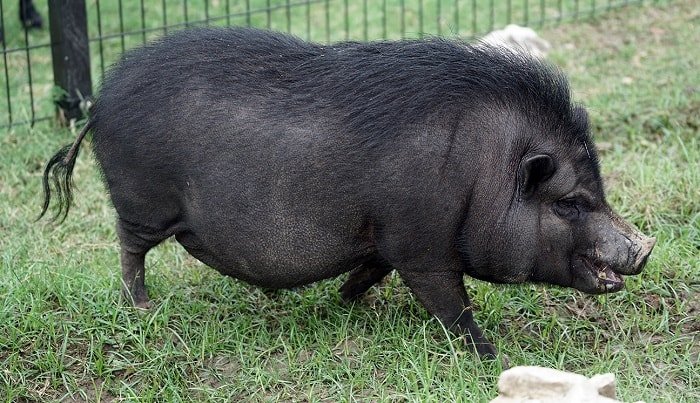
What are the characteristics of Vietnamese Pot-bellied pigs?
Physical characteristics of Vietnamese Pot-bellied pigs
1. Size:
The Vietnamese pot-bellied pig is a small size breed compared to other domestic pigs.
They grow up to about an average of 35cm (14in) In Height.
Their swaybacks are easily noticeable and can be easily used to identify the breed among a team of pigs.
2. Colour:
A pure breed pot-bellied pig is grey or black in colour, sometimes with white spots all over.
Nevertheless, newer cross breeds now have mixtures of colours such as pink, white and black, Pink and black
3. Head:
They have a small head that grows a bit bigger as the pot-bellied pig age with heavy sagging jowls to accompany.
4. Body:
Their skin is wrinkled all over as they grow older but this is not a sign of being overweight.
Their body is covered by hair of various colours that serves as protection from sunburn and keeps them cool.
Since pigs can sweat, they like to wallow in mud to stay cool.
5. Ears:
Vietnamese pot-bellied pigs have small elastic ears which are usually standing and small eyes too.
6. Weight:
They have relatively fast growth as they reach market size within half a year.
Their average weight is 50kg (110lb) and 48kg (105 lb) for both the boar and sow respectively.
7. Snout:
Pot-bellied pigs have a very sensitive upturned snout.
Which comes in different colours such as, black with white spots, pink and black and sometimes just black.
8. Teeth:
Pigs have the same teeth set just as men with a little bit of difference.
It is well adapted to biting, cutting and chewing of food With the incisors in front, canine to follow, premolar and then molars behind.
They undergo teething also, where the piglets’ teeth break through the gum and new ones grow.
Teeth clipping is important for all piglets being breastfed so that they do not bite or injure the sow while feeding.
9. Tusks:
All breeds of hogs have a tusk that grows throughout a pig’s life.
Vietnamese pot-bellied sow has a much lesser tusk than the boar.
10. Hooves and claws
The entire sole of the pot-bellied foot is to the ground which makes it much easier for it to walk.
Their weight is carried by all four toes in each foot which is linked to short muscular limbs.
11. Tail:
Pot-bellied pigs have a moderately short tail that is not curled up.
Intrinsic characteristics of Vietnamese Pot-bellied pig breeds
12. Behaviour
This small-sized pig breed learns fast, focuses well and is very easy to train.
They are intelligent pig breeds as well as docile, active, and very friendly.
13. Climate adaptability:
Vietnamese pot-bellied pigs do well both in cold and hot regions.
They are known to survive in all climatic zones and they have been exported far and wide.
Hence, the Vietnamese pot-bellied pigs are found in every climatic zone all over the world.
14. Growth:
Their growth rate is relatively fast as they reach sexual maturity at 6months.
Although, they take much time to reach full maturity which is six years of age.
15. Breeding/reproduction:
Vietnamese pot-bellied pigs are good mothers as they take good care of their young ones.
The pregnant sow does have their sagging belly drag on the ground.
So, they’ll always need your help when they are about to give birth.
16. Meat quality:
Pot-bellied pigs produce tender meat of good quality, known to be well flavoured and tasty.
What are the disadvantages of rearing Vietnamese Pot-bellied pigs?
Requires a large amount of space to roam, root, dig and snuffle round.
In fact, this is one of the things they like doing the most: pigs love foraging and rooting their environment.
As a farmer, keeper, breeder and pig lover a well spacious environment should be one of the major things you consider before getting a pig.
If you don’t have enough space for the pigs to forage and feel at home, then don’t bother getting them.
2. They are now scarce pigs:
Vietnamese pot-bellied pigs are now raised by only a few farmers who get special orders for it.
They are now uncommon breeds of pigs.
This is because other commercial pigs have proven to be more productive than they are and so over time they have been forgotten.
3. Sometimes they get aggressive and seldomly invasive:
Pot-bellied pigs sometimes get angry or aggressive and act irrationally just like a little child would do.
They are known to be generally friendly and docile pigs but sometimes they get mood swings and tend to be unhappy and aggressive pigs.
4. Their small size discourages farmers from getting them for their farms.
I’m sure you know that one of the major reasons anyone will venture into a business is because they have found it productive and profitable.
Although, they have good quality meat they do not compensate in terms of size like other commercial pig breeds.
What is the lifespan of Vietnamese Pot-bellied pigs?
A healthy Vietnamese pot-bellied pig can live up to 12-15 years.
They attain sexual maturity at 6 months, full maturity at about 6 years.
What is the habitat and environment of Vietnamese Pot-bellied pigs?
They are rugged breeds that love to roam around and be with other pigs as they get lonely easily.
These guys can live anywhere as long as it’s clear there’s food and a couple of companions around.
Pot-bellied pigs enjoy the semi-intensive system of care the most as they are still allowed to forage themselves in open fields and be themselves.
How much space do Vietnamese Pot-bellied pigs need?
Just as mentioned earlier they require a whole lot of space either when kept in open paddocks covered areas or a pen.
An adult pig needs about 7-9m² of space per animal in confinements and 9-12m² each in paddocks.
Frequently Asked Questions About Vietnamese Pot-bellied Pigs
Is Vietnamese Pot-bellied pig good for meat?
Yes, of course, they are.
One of the major reasons Pot-bellied pigs became so popular not just in Vietnam but all over the world was because they are a good pork source.
Can Vietnamese Pot-bellied pigs be trained as pets?
This easily instructable friendly pig breed are wonderful pets to have especially pig pet lovers.
Not only are they beautiful and small but they are intelligent and lovely pets, but they get bigger as they grow.
What are Vietnamese Pot-bellied pigs known for?
They have such juicy, well-flavoured meat of good quality with great consumer demand
Also, the pot-bellied pigs were very famous pets for a short while, after which they faded away.
How old does a Vietnamese Pot-bellied pig have to be to breed?
Vietnamese pot-bellied pigs get fertile at 6 months after birth.
Although, they take much longer periods to be fully physically mature.
What do Vietnamese Pot-bellied pigs eat?
These Omnivores will eat plants and animal materials.
They eat grasses and hay mostly, grains, fruits and vegetables, and domestic kitchen wastes.
There are also commercial pig feeds that are already balanced diets on their own without adding any food or supplement.
How big will Vietnamese Pot-bellied pigs get?
This breed of pigs looks very small as piglets and can get up to about an average of 50kg.
Are Vietnamese Pot-bellied pigs good for crossbreeding?
Indigenous Vietnamese Pot-bellied pigs have genetic diversity.
Meaning, they have been cross-bred with many other farm pig breeds for better meat and more considerable size.
So, know your breed well before you go ahead to get one because not all pot-bellied pigs are pure breed.
Conclusion
Vietnamese pot-bellied pigs are popular small-sized pigs easily recognisable with their “pot-belly”.
These are a breed of pigs commonly found in all parts of the world, especially Vietnam, its place of origin.
Their pork is what most of its keepers are after as they are tasty and juicy most especially when kept extensively.
Though these pigs are small in size they used to be very great in numbers but not anymore as they are now listed as an endangered breed.
References:
- What do Pigs Eat? [Most Essential Food for Pigs]

- Tamworth Pig breed- Characteristics, Origin, Breed info and Lifespan
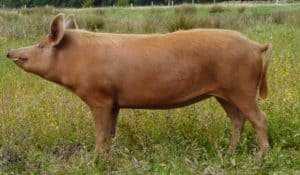
- How to start goat farming business

- 3 Cheap and Easy Goat Housing Construction Styles
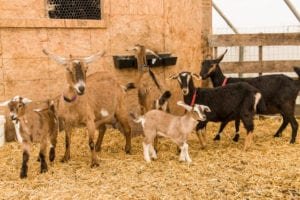
- Different Types of Pig Breeds for Pig Farming Business

- Benefits of Starting a Commercial Pig Farming Business

